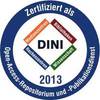PDF, English
 Restricted access: Repository staff only until 2 December 2025. Restricted access: Repository staff only until 2 December 2025.
Login+Download (8MB) | Terms of use |
Abstract
Acute lymphoblastic leukemia (ALL) represents the most common pediatric malignancy affecting around one in three children and young adults with cancer. Among ALL, T-cell acute lymphoblastic leukemia (T-ALL) remains particular challenging. Despite initial favorable treatment responses, 20% of T-ALL patients will relapse. While induction failure of initial treatment is the strongest predictor of relapse, it occurs only in 3% of all T-ALL patients, leaving the majority of relapsed patients without identifiable risk factors at diagnosis. Relapsed T-ALL is associated with marked treatment resistance and poor outcomes, with long-term survival rates reaching merely 20%. This underscores an urgent need to deepen our understanding of the mechanisms underlying treatment failure and relapse, and to develop improved tools for risk stratification and treatment optimization. In this dissertation I investigate the clonal evolution of pediatric T-ALL patients from initial diagnosis to relapse. Utilizing VASA-seq, a single-cell total RNA sequencing method, I analyzed 13 relapsing T-ALL patient-derived xenograft (PDX) samples collected at diagnosis and relapse, as well as five non-relapsing T-ALL PDX samples collected at diagnosis. The study revealed a subpopulation of T-ALL cells, termed “stem-like T-ALL cells”, that is present across multiple patients, particularly in patients with TAL1-driven T-ALL and type-2 relapses. These stem-like cells are characterized by dormancy, a distinct gene-regulatory network, specific gene expression patterns, and unique splicing isoform usage. Expansion of this stem-like cell population during the course of initial disease to relapse suggests resistance to first-line therapy further supported by in-vitro and in-vivo functional assays. Moreover, gene expression analyses have identified anti-apoptotic inhibitors as potential therapeutic agents, which needs to be further evaluated by assessing the sensitivity of stem-like T-ALL cells to BCL-2 or MCL-1 inhibitors. Finally, I developed a stemness score which has shown to serve as a robust biomarker for predicting induction failure in a large-scale bulk RNA seq dataset, thus enabling the identification of T-ALL patients at higher risk of treatment failure. In the future, this score could potentially be used as a biomarker to identify such patients early, thereby allowing for targeted therapy adjustments.
| Document type: | Dissertation |
|---|---|
| Supervisor: | Höfer, Prof. Dr. Thomas |
| Place of Publication: | Heidelberg |
| Date of thesis defense: | 9 May 2025 |
| Date Deposited: | 11 Jun 2025 08:24 |
| Date: | 2025 |
| Faculties / Institutes: | The Faculty of Bio Sciences > Dean's Office of the Faculty of Bio Sciences Service facilities > European Molecular Biology Laboratory (EMBL) |
| DDC-classification: | 500 Natural sciences and mathematics |
| Controlled Keywords: | Akute lymphatische Leukämie, Einzelzellanalyse, Therapieresistenz |









